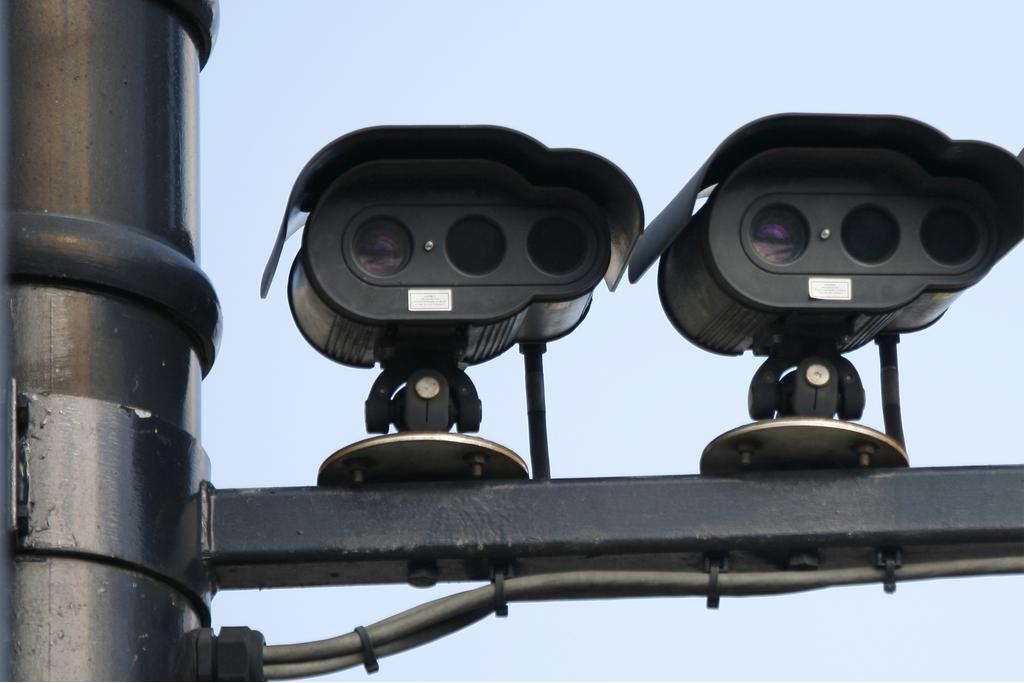
Make a driver brake, slow him for a moment; teach a driver not to speed, slow him for a lifetime. That's the philosophy behind the new "speed corridors" concept a Washington, D.C.-area community has been testing in recent years — reportedly to great effect. National safety officials say the program succeeds where others have failed because it focuses on changing behavior as opposed to merely punishing it.
Related: Study Ranks Best and Worst States for Drivers
Researchers report that the system, which makes abundant use of speed-enforcement cameras across an entire stretch of road, has been proven to reduce fatal or incapacitating car crashes by 39 percent on lower-speed roads when combined with other program measures. That translates to an impressive 21,000 lives saved if the program were implemented on a national scale, researchers say.
The Insurance Institute for Highway Safety today will present its report on the effectiveness of speed corridors, as well as the use of speed-enforcement cameras on a broader scale. IIHS President Adrian Lund will make the presentation during the 2015 Governors Highway Safety Association's annual meeting, a national conference running through Wednesday in Nashville and attended by 500 high-ranking state highway officials there to discuss new methods for reducing fatalities on U.S. roads. The 2015 summit comes as many states report spikes in traffic deaths following years of record declines, GHSA noted.
The speed-corridors experiment began in 2012 in Montgomery County, Md., with camera enforcement trained on long stretches of roads with speed limits of 35 mph or less. To prevent motorists from becoming familiar with camera positions, the devices are regularly moved to varied locations.
"Speed-camera corridors force drivers to watch their speed for the length of the road, instead of slamming on the brakes at a specific location and then speeding up again," said report co-author Anne McCartt in a statement.
In addition to the localized results, researchers further observed what they referred to as the "spillover" phenomenon in which drivers slowed down on roads outside the designated corridors. That resulted in a 27 percent reduction in deaths or severe injuries on non-camera-enforced roads with speed limits of 40 mph or less, according to the report.
The safety gains reported by researchers in Maryland don't end there. Since the introduction of speed cameras in general in Montgomery County in 2007, the devices have been credited with reducing — by a whopping 59 percent — the likelihood of a driver going more than 10 mph over a posted limit of 35 mph or less or in school zones. The introduction of speed cameras alone resulted in a 19 percent reduction in the likelihood of a fatal or severe-injury crash, researchers report.
The test county now has 56 fixed cameras, 30 portable ones and a half-dozen mobile speed vans, all deployed on lower-speed residential streets. But despite the ostensible success, the use of enforcement cameras remains a hugely unpopular practice, and at last count only 138 jurisdictions nationwide had automated speed-enforcement programs. Indeed, the history of enforcement-camera use is fraught with well-documented challenges to their reliability, accuracy and admissibility in court, as well as accusations of the devices being used to generate revenue rather than promote safety — not to mention your garden-variety Big Brother concerns.
But researchers have indicated that the emphasis on changing drivers' behavior on these lower-speed stretches of roadway with a high degree of transparency differentiates the Montgomery model. Nearly all of surveyed drivers were aware of the cameras, while more than three-quarters reported having reduced their speed as a result of the program, while nearly 60 percent acknowledged having received a ticket personally.
"Automated enforcement can be controversial, and some communities have rolled back programs because of a backlash," IIHS' study reported. "However, 62 percent of drivers surveyed in Montgomery County said they favored speed cameras on residential streets.
"That means there are supporters even among those who have been ticketed."
No comments:
Post a Comment